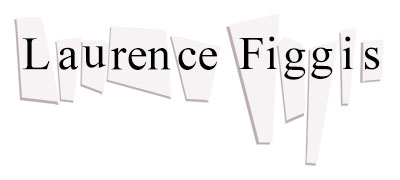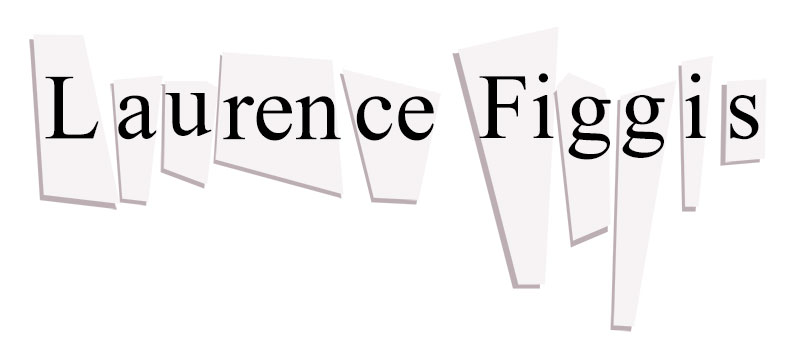By My Voice I Shall Be Known
According to the Hellenic mythology, the Sybil of Cumae attracted the attentions of Apollo a god of various jurisdictions, who offered to grant her anything she desired if only she would sleep with him. Holding up a fistful of sand, she asked for as many years as there were grains of sand running through her fingers. But the deity had the last laugh (as deities usually do). The Sybil of Cumae had failed to ask for eternal youth and was subject to extremes of degeneration in her later life. She eventually subsided into a wrinkled husk contained in a jar, but the Fates allowed her to retain her voice long after her body had disintegrated completely. As MarinaWarner writes, quoting the Sybil:
‘By my voice I shall be known’: that’s no bad epitaph for a storyteller. (Warner, 1994: 11).
But would such an epitaph ‘do’ for visual practitioners? Do artists have voices? Is it appropriate to speak of voice in relation to craft-based activities like painting or sculpture? And if so, where does the voice reside? In concepts or narratives? Or imbued into the very formal and material properties of art objects themselves? The extent to which art should be explained and the extent to which artists themselves should participate in this process of explanation has often been debated. Even creative writers who are inspired by visual art objects often find themselves afflicted with feelings of awkwardness or inferiority when attempting to describe or interpret them- and this is not a new phenomenon. Keats’s poem ‘Ode to a Grecian Urn’, one of the most famous pieces of ekphrastic literature ever written, was first published in 1819.
Thou still unravish’d bride of quietness,
Thou foster-child of silence and slow time,
Sylvan historian, who canst thus express
A flowery tale more sweetly than our rhyme,
What leaf-fring’d legend haunts about thy shape
Of deities or mortals, or of both,
In Tempe or the dales of Arcady?
What men or gods are these? What maidens loth?
What mad pursuit? What struggle to escape?
What pipes and timbrels? What wild ecstasy?’
Heard melodies are sweet, but those unheard
Are sweeter; therefore, ye soft pipes, play on;
Not to the sensual ear, but, more endear’d,
Pipe to the spirit ditties of no tone:
Fair youth, beneath the trees, thou canst not leave
Thy song, nor ever can those trees be bare;
Bold lover, never, never canst thou kiss,
Though winning near the goal – yet, do not grieve;
She cannot fade, though thou hast not thy bliss,
For ever wilt thou love, and she be fair!
What Keats acknowledges (in the very act of demonstrating his ‘seminal’ command of verbal form) is that written language is no more trustworthy and efficacious than visual or pictorial modes of expression and shouldn’t therefore be regarded as superior. There are some things that cannot be expressed in verbal language—that is why we have a culture composed of material forms and experiences, of colours, of textures, of spaces as well as words. The poem reminds us that issues of communication in art are not wholly pragmatic—Keats invests the idea of artistic expression with a strong feeling of existential anxiety, evoking ideas of mortality and loss, and contrasting these with the apparent ‘immortality’ of the object he describes, a quality embodied in its stillness and its silence.
As the literary critic Stephen Cheeke has written: ‘[The] possibility, that speech or language inevitably fail to reach the mute art object …is often a latent assumption in thinking about ekphrasis’ (Cheeke, 2008: 52). One of the primary notions of 20th century modernism is that narratives don’t belong in visual art or that visual art objects shouldn’t try to communicate anything other than their own materiality. We know, however, that the autonomy of the modernist object was reliant on text to be fully theorised, for example in Clement Greenberg’s or Michael Fried’s essays on modern painting and sculpture. We also know that the ‘voiceless’ object of modernism was challenged by Conceptual Art and later by a range of postmodernist critical practices, which either replaced craft-based endeavour with language-based procedures or made the verbal explanation paramount in the reception of the work.
According to Brian Wallis, ‘the myth of the inarticulate or silent artist’ (associated with modernist abstraction) is the product of broader social and historical conditions – in particular of the loss of storytelling as a mode of social communication in the modern western world (Wallis, 1987: xiii). The Marxist philosopher Walter Benjamin traced the final demise of the storyteller to the traumatic confrontation between human and machine in the Great War – though oral culture had in fact been undergoing a gradual process of erosion throughout the nineteenth century as a result of spreading industrialisation which not only eradicated the social conditions under which communal storytelling among ordinary people could flourish, but also replaced oral culture with the printed book and subsequently with the cinema, the radio, the television, as the dominant modes of narrative transmission.
What Benjamin advocated, writing in the interwar period, was the revolutionary potential of a seemingly archaic genre of storytelling. In the late twentieth century, many artists, following Benjamin’s lead, turned to storytelling as a means of exploring the social relations that underlie artistic production and the impact of mass culture upon individual experience. Laurie Anderson was among the most influential artists of that generation. In her mass-media performances she has frequently dealt with the issue of communication and its reliance on socially-specific customs and value-systems. In the work entitled United States, originally staged in 1983, Anderson performed in front of a series of projections including an emblem derived from the exterior of the Pioneer 10 spacecraft. The script for Anderson’s performance reads:
In our country, we send pictures of our sign language into outer space. They are speaking our sign language in these pictures. Do you think they will think his hand is permanently attached that way? Or do you think they will read our signs? In our country, good-bye looks just like hello. (Anderson, 1987: 70-1).
The emphasis of language and the rise of the ‘concept’ in western visual practice has led to the negation of the expressive or ‘expressionistic’ voice in art. Indeed, despite various attempts to revive Expressionism over the past three decades, the dominant voices in the art world have tended to keep the genre at an intellectual remove. In an essay written in 1985, the American critic Hal Foster wrote of the need to:
discuss expressionism as a specific language… we… must inquire again how it encodes the natural and simulates the immediate. (Foster, 1985: 60).
According to critics like Foster, who have proved very influential on current forms and perceptions of visual art, expressionism must to a large extent be regarded as artificial, as inauthentic. Indeed, the ‘expressive fallacy,’ as Foster called it, has long since migrated into kitsch. The voice – as metaphor par excellence for the human spirit – occurs in its most potent form, not in contemporary fine art, nor in the high art of opera, but in the mass-cultural iconography of Glee and The X Factor and various other TV talent-contests. Here the facial gurning of the singers (their pantomimed soul-searching) offers an uncanny simulationsof the primal scream or cry as depicted by Edvard Munch, Pablo Picasso, or even Francis Bacon. This is of course a form of ‘shrink-wrapped’ expressionism—the ‘expressive fallacy’ reinvented as corporate display.
But the mawkish excess of this phenomenon is even now being superseded in the art world by a crisis of ‘rational’ theoretical language—we might refer to the latter as the ‘discursive fallacy’—to borrow and adapt Foster’s phrase. In 2012 the artist David Levine and the critic Alix Rule, undertook a comprehensive deconstruction of art-world rhetoric using the gallery ‘press-release’ as the point of departure. Levine and Rule coined the phrase ‘International Art English’ or IAE, to refer to the type of wordy, jargon-heavy literature that one often encounters in contemporary art galleries and on their websites.
Levine and Rule traced these language conventions to the October publication, the extremely influential journal of art-criticism first published in New York in 1974, whose contributors (including Rosalind Krauss and Annette Michelson), sought to re-energise the critical language of their day, which they saw as having become intellectually moribund. Like the high French theory it appropriates, the October house-style engages with a high level of complexity of ideas and concepts resulting in texts that are famously difficult to ‘understand’. Such a style has become subject to excessive re-appropriation in the art-world, resulting in a form of convoluted rhetoric that may even constitute, in the eyes of some readers, a veil for intellectual fraudulence.
While the intellectual and apparently scholarly language of the press-release – and other art-world literature – appears antithetical to the ‘expressive fallacy’ denounced by Foster, its characteristic forms are now equally prone to pastiche and parody. The ‘discursive-fallacy’ tends towards an aspect of ornamentation and flourish, rather than analysis or communication. It is above all a kind of prose-poetry, a form of textual theatre, operatic in its declamatory phrasing, its continuous striving towards sublime crescendos in its verbal rhythms and sentence-structure. But the exhibition press–release is also ‘bureaucratic’ in the sense that it emerges from the commercial and/ or institutional art world and attains material form through the coldly rationalised technology of word-processing, emailing and photocopying. The technology located behind the scenes in the standard gallery office is thus the mechanical disembodied form of non-human voice that generates utterances or commandments in concrete (though ephemeral) shape.
The problem is not that the voice of the artist has been ‘silenced’ in the contemporary world (as the mermaid’s was when her tongue was cut out) but that the available language has been corrupted and vulgarised, clogged up with irony and self-consciousness. In our current epoch neither the ‘expressive’ nor the ‘discursive’ fallacy offer wholly satisfactory models for understanding works of art or— perhaps more importantly—motivating their creation or facilitating their modes of reception. It may be that the available language has ceased to provide the illusion of articulacy (either emotional or intellectual) that shored up the confidence of our forebears in periods of history that were less anxiously self-reflexive than our own. But it may also be the case that such language acquires new forms of sophistication (and formal delicacy, nuance and invention) in the very process of becoming threatened, adulterated and compromised. In that respect, the current situation may not be an occasion for pessimism or resignation—it is rich in the sorts of challenges, pitfalls and anxieties that are the life-blood of any creative practice. It is above all, like the most amusing fallacies of past and present, rich in humorous potential.
This paper was delivered at the Poetry Club, Glasgow, on 7th September 2013, as one of a series of events organised by the Scotland-based artist collective 2/1/4/1 to accompany their launch and inaugural members’ show.
REFERENCES:
Anderson, Laurie. ‘Words in Reverse’. in Blasted Allegories. An Anthology of Writings by Contemporary Artists. Brian Wallis ed. Cambridge, Mass.; London: MIT Press, 1987.
Benjamin. Walter. ‘The Storyteller.’ in Illuminations. ed. Hannah Arendt. trans. Harry Zorn. New York: Schocken Books, 1969. pp. 83-109.
Cheeke, Stephen. Writing for Art: the Aesthetics of Ekphrasis. Manchester; New York: Manchester University Press, 2008.
Foster, Hal. Recodings. Art, Spectacle, Cultural Politics. New York: The New Press, 1985.
Rule, Alix and David Levine. ‘International Art English. On the rise-and the space – of the art-world press release.’ Triple Canopy. Issue 16 (July 2012). http://canopycanopycanopy.com/16/international_art_english 20.2.13
Wallis, Brian. ‘Telling Stories: A Fictional Approach to Artists’ Writings.’ in Blasted Allegories. An Anthology of Writings by Contemporary Artists. Brian Wallis ed. Cambridge, Mass.; London: MIT Press, 1987.
Warner, Marina. From the Beast to the Blonde. On Fairy Tales and Their Tellers. London: Chatto and Windus, 1994.

